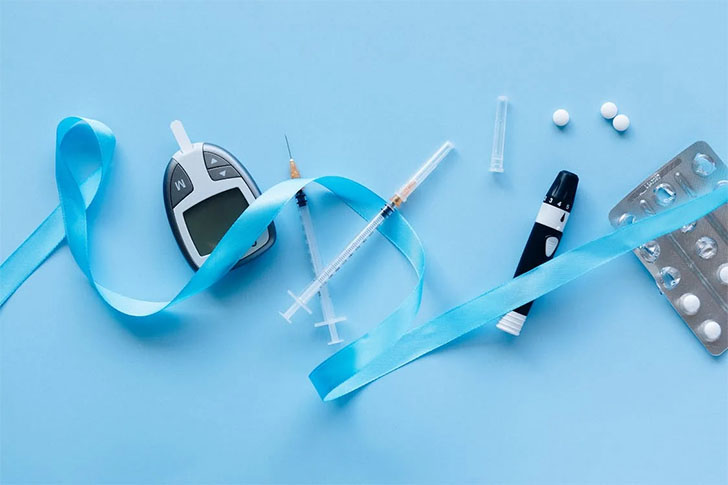Diabetes is more than just a buzzword in health circles. It's a metabolic disorder that affects the body's ability to process sugar, with insulin being the central player. Insulin, a hormone produced by the pancreas, helps our cells absorb glucose from the bloodstream. However, with diabetes, either the body can't produce enough insulin or can't use it effectively, leading to elevated blood sugar levels. Over time, this can cause a myriad of health complications. According to the World Health Organization, as of 2019, around 422 million people globally have diabetes. That's one in every eleven people!
Types of Diabetes

Nataliya Vaitkevich / Pexels
Type 1 Diabetes
Often referred to as juvenile diabetes, Type 1 is an autoimmune condition where the body mistakenly attacks and destroys the insulin-producing beta cells in the pancreas. This means the body produces little to no insulin. It's generally diagnosed in children and young adults but can appear at any age. While its exact cause is unknown, genetics, viruses, and environmental factors might contribute to its onset. Daily insulin intake, through injections or an insulin pump, is a must for managing this type.
Type 2 Diabetes
Accounting for up to 95% of all diagnosed diabetes cases in adults, Type 2 is marked by insulin resistance. This means the body is still producing insulin, but it’s not used efficiently. Over time, the pancreas can't keep up with the increased demand, leading to a shortage. Genetics, obesity, lack of exercise, and poor diet are significant risk factors. It's more common in adults but is now also seen in children, primarily due to childhood obesity. Treatment often includes lifestyle modifications, oral medications, and in some cases, insulin.
Gestational Diabetes
This temporary type occurs during pregnancy when the body can't make the extra insulin needed, leading to elevated blood glucose. If not managed, it can cause the baby to grow significantly larger than usual, leading to complications during childbirth. Diet and exercise are primary management tools, but some women might need medication. While it usually resolves post-pregnancy, affected women are at higher risk for Type 2 diabetes later in life.
What Causes Diabetes?

Polina Tankilevitch / Pexels
Various factors can increase the risk of diabetes: family history, age, ethnic background, obesity, and sedentary lifestyles are key contributors. But remember, while risk factors can increase susceptibility, they don't guarantee onset.
Managing Diabetes Through Diet
Diet plays a foundational role in diabetes management. Whether you're trying to prevent or control diabetes, your nutritional needs are virtually the same as everyone else. It's all about making sure you have well-rounded meals. Let’s dive deeper into how diet impacts blood sugar and overall diabetes management.
Carbohydrate Counting & Glycemic Index (GI)
Carbohydrates have the most significant impact on blood glucose levels. Understanding the types and amounts of carbohydrates you consume can help regulate blood sugar. It's beneficial to familiarize oneself with the Glycemic Index (GI), which ranks foods based on how they affect glucose levels. Foods with a high GI increase blood sugar rapidly, while those with a low GI provide a slower, sustained sugar release. Opting for low-GI foods, such as whole grains, legumes, and certain fruits and vegetables, can help maintain stable blood sugar.
Fiber-Rich Foods
Dietary fiber, especially soluble fiber, can slow the absorption of sugar, improving blood sugar levels. Moreover, a high-fiber diet can lower the risk of heart disease, a condition diabetes patients are more susceptible to. Excellent sources of fiber include vegetables, fruits, beans, whole grains, nuts, and seeds.
Healthy Fats
Contrary to popular belief, not all fats are bad for diabetes. Monounsaturated and polyunsaturated fats found in olive oil, avocados, almonds, walnuts, and fatty fish like salmon can help manage blood sugar by improving insulin sensitivity. However, it's crucial to limit saturated fats and entirely avoid trans fats, as they can exacerbate insulin resistance.
Lean Protein Sources

Malidate Van / Pexels
Protein doesn't significantly impact blood sugar, but it's essential for muscle repair and growth. Opt for lean protein sources like poultry, fish, beans, and soy products. Limiting red meat and avoiding processed meats can also reduce the risk of other complications associated with diabetes.
Consistent Meal Timing
Eating meals and snacks at consistent times every day can help maintain steady blood sugar levels. If you're on medications or insulin, it's especially vital to eat at consistent times to prevent blood sugar from going too low.
Limit Sugary Beverages & Alcohol
Sugary drinks can cause rapid spikes in blood sugar and should be consumed minimally or avoided. As for alcohol, it can cause either high or low blood sugar, depending on how much you drink and if you eat at the same time. It's essential to consult with a healthcare provider about whether alcohol can be a part of your diet.
Regular Monitoring
This goes hand-in-hand with diet. Regularly checking blood sugar levels after meals can help you understand how different foods affect your glucose levels, enabling you to make better dietary choices.
Diabetes Treatment Plans

Nataliya Vaitkevich / Pexels
Effective diabetes treatment is tailored to individual needs but generally aims to keep blood sugar levels as close to normal as possible. Here’s an expanded look at treatment strategies:
Insulin therapy
All individuals with Type 1 diabetes need insulin, given through injections or wearable insulin pumps. There are various types of insulin, categorized by how fast they start to work and how long their effects last: rapid-acting, short-acting, intermediate-acting, and long-acting. The choice depends on individual needs. With the advent of technology, Continuous Glucose Monitors (CGMs) can now track blood sugar levels throughout the day, making insulin dosage adjustments more precise.
Oral medications
Many medicines for Type 2 diabetes exist, each working differently. Metformin, for instance, improves the body's sensitivity to insulin and reduces glucose production in the liver. Sulfonylureas stimulate the pancreas to produce more insulin, while DPP-4 inhibitors help reduce blood sugar levels but have a lesser effect than sulfonylureas. The best medication depends on various factors, including any other health conditions.
GLP-1 receptor agonists
These injectable medications slow digestion, preventing the liver from making too much glucose. Additionally, they curb appetite, which can lead to weight loss—a helpful factor in managing Type 2 diabetes.
SGLT2 inhibitors
These newer medicines prompt the kidneys to release more glucose into the urine. Besides lowering blood sugar, they might also reduce the risk of heart disease and aid with weight loss.
Diabetes, while daunting, isn't an insurmountable challenge. With the right guidance, dietary choices, and treatment plan, one can lead a fulfilling life. Remember, it's crucial to work closely with your healthcare provider to tailor a treatment plan specific to your needs.
show more






















